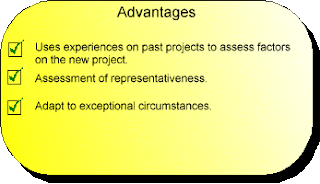In computer programming, cohesion is a measure of how strongly-related is the functionality expressed by the source code of a software module. Methods of measuring cohesion vary from qualitative measures classifying the source text being analyzed using a rubric with a hermeneutics approach to quantitative measures which examine textual characteristics of the source code to arrive at a numerical cohesion score. Cohesion is an ordinal type of measurement and is usually expressed as "high cohesion" or "low cohesion" when being discussed. Modules with high cohesion tend to be preferable because high cohesion is associated with several desirable traits of software including robustness, reliability, reusability, and understandability whereas low cohesion is associated with undesirable traits such as being difficult to maintain, difficult to test, difficult to reuse, and even difficult to understand.
In computer programming, cohesion is a measure of how strongly-related or focused the responsibilities of a single module are. As applied to object-oriented programming, if the methods that serve the given class tend to be similar in many aspects, then the class is said to have high cohesion. In a highly-cohesive system, code readability and the likelihood of reuse is increased, while complexity is kept manageable.
Cohesion is decreased if:
* The functionalities embedded in a class, accessed through its methods, have little in common.
* Methods carry out many varied activities, often using coarsely-grained or unrelated sets of data.
Disadvantages of low cohesion (or "weak cohesion") are:
* Increased difficulty in understanding modules.
* Increased difficulty in maintaining a system, because logical changes in the domain affect multiple modules, and because changes in one module require changes in related modules.
* Increased difficulty in reusing a module because most applications won’t need the random set of operations provided by a module.
Types of cohesion
Cohesion is a qualitative measure meaning that the source code text to be measured is examined using a rubric to determine a cohesion classification. The types of cohesion, in order of the worst to the best type, are as follows:
Coincidental cohesion (worst)
Coincidental cohesion is when parts of a module are grouped arbitrarily; the only relationship between the parts is that they have been grouped together (e.g. a "Utilities" class).
Logical cohesion
Logical cohesion is when parts of a module are grouped because they logically are categorized to do the same thing, even if they are different by nature (e.g. grouping all mouse and keyboard input handling routines).
Temporal cohesion
Temporal cohesion is when parts of a module are grouped by when they are processed - the parts are processed at a particular time in program execution (e.g. a function which is called after catching an exception which closes open files, creates an error log, and notifies the user).
Procedural cohesion
Procedural cohesion is when parts of a module are grouped because they always follow a certain sequence of execution (e.g. a function which checks file permissions and then opens the file).
Communicational cohesion
Communicational cohesion is when parts of a module are grouped because they operate on the same data (e.g. a module which operates on the same record of information).
Sequential cohesion
Sequential cohesion is when parts of a module are grouped because the output from one part is the input to another part like an assembly line (e.g. a function which reads data from a file and processes the data).


